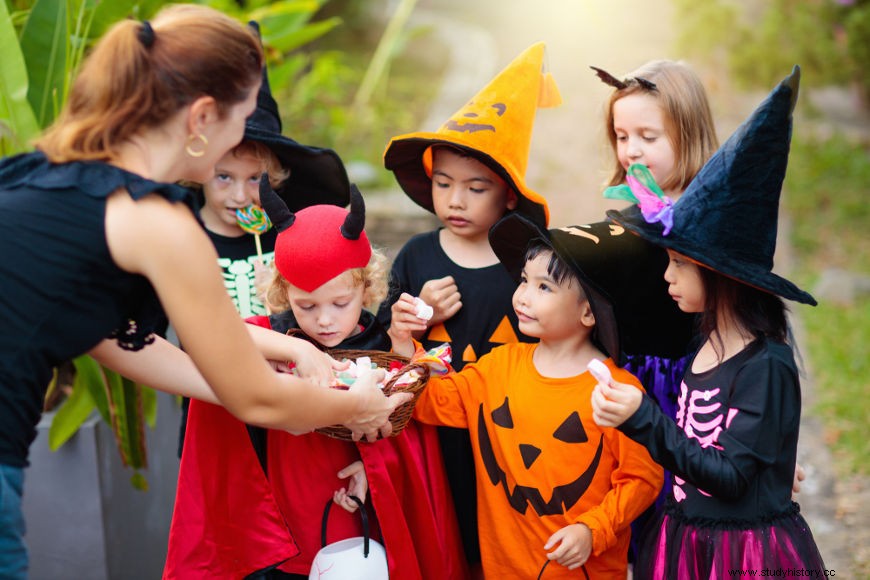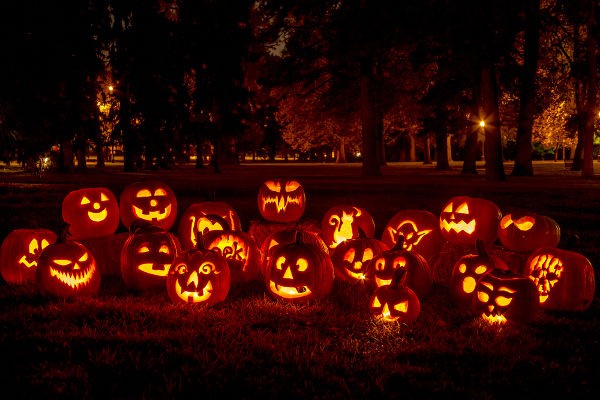The Halloween It is a very popular festival in the United States that originated in the British Isles and is derived from a festival held by the Celts in antiquity. During this party, which takes place on October 31, children dress up as monsters and take to the streets asking people for sweets. Here in Brazil this party has become increasingly common due to the influence of North American culture and the internet.
Access also :Get to know a little of the Vikings' cosmogony about the end of the Universe
What is the origin of Halloween?
Historians attribute that Halloween was the result of mixing traits of a pagan and Christian religious culture. The pagan origin of Halloween is related to Samhain , a festival dedicated to the harvest and the dead practiced by the Celts in antiquity. The Celts were a people who inhabited the British Isles , as well as part of the Iberian Peninsula and Central Europe.
Samhain was one of the most important festivals held by these people and took place from October 31st to November 1st , celebrating the harvest, as well as paying homage to the dead. Samhain was a time of transition for the Celts as it was at this time that one year ended and another began.

Samhain for the Celts was a time of celebration for account of the harvest that had been gleaned and that would sustain them through the long winter that was approaching. This was celebrated with great parties, but beyond that, Samhain was an important moment in the Celtic worldview, as they believed that during the festival, the boundaries that existed between the real world and the supernatural world ceased to exist.
Thus, the Celts believed that during Samhain, the dead from the last year would roam the earth to visit the places they lived and see their family members. In addition to the dead, the Celts who believed that other supernatural beings, including evil spirits would roam the earth, after all, the boundaries between the real world and the supernatural were suspended.
Because of the festival, people lit the villages and the paths with lanterns and bonfires were lit to ward off evil spirits. People walked the streets wearing masks and disguises to avoid being recognized by evil spirits. Another way to ward off evil spirits was to carve macabre faces into turnips.
Login also :Understand how the Catholic Church was established during the Middle Ages
Christian Influence
Halloween is a party that emerged from traces of a pagan culture, but Christianity that was rooted in the British Isles throughout the Middle Ages also had its influence for the emergence of this party. This is because when the Catholic Church began to spread Christianity across Europe, one of the strategies used was to appropriate of pagan culture characteristics and make them Christian.

Thus, as anthropologist Wendy Fonarow mentioned, the Church began to claim that the Celtic Feast of the Dead (Samhain) was not for the common dead, but for the Saints of the Church|1| . This resignification of local cultures did not just happen in the British Isles, but throughout the European continent.
In the British case, it started with a measure taken during the Middle Ages, specifically in the eighth century , by Pope Gregory III . This pope decided that the 1st of November would be dedicated to celebrate All Saints' Day , a day dedicated to the veneration of deceased saints. This decision of Gregory III was exclusive to the diocese of Rome.
A few decades later, Pope Gregory IV decided to extend the measure to all of Christendom. Thus, the 1st of November began to consolidate itself as the All Saints' Day , as All Saints' Day is known in English. Before Gregory III's decision, All Saints' Day was celebrated in May on the date that an ancient Roman festival was held.
Historians don't know if the measure was carried out on purpose to combat the influence of Samhain, but in any case, through it a period of Christian celebrations in the British Isles known as Allhallowtide was consolidated. . This period extended from October 31 to November 2 and had three commemorations.
The celebrations that mark the Allhallowtide took a few centuries to consolidate, so much so that only in the 14th century are records that mention the period in similar nomenclature to the one mentioned. The three commemorations of the period were:
-
All Hallow's Eve – celebrated on October 31st as the eve of All Saints' Day.
-
All Saints' Day – celebrated on November 1st as All Saints' Day . It was a date of veneration for the saints of the Church.
-
All Souls' Day – celebrated on November 2 as All Souls' Day . Date dedicated to the prayer of the faithful of the Church and of those who were in purgatory.
Even with the consolidation of Christianity in the British Isles, traces of traditional pagan culture were marked in the popular unconscious and, thus, a series of practices carried out during Samhain were transferred to the celebrations. that marked the Allhallowtide. During Christian celebrations, it was common for people to light candles and bonfires to ward off practices understood as demonic, such as witchcraft, for example.
Halloween comes to US
Halloween appeared in Europe sometime in the Middle Ages or Modern Age, but this practice only came to the United States late. It was in the 19th century, with a massive migration of Irish people, that Halloween arrived in the United States. Some historians say that the feast did not exist in the US at the time of colonization, while others suggest that it did exist, but was extremely limited by the religious rigidity of the Puritans (Calvinists).
With the Irish, elements of their culture were taken to the United States and after a while they ended up gaining fame and becoming one of the biggest celebrations in that country. Currently, Halloween is a huge party that mobilizes an average of 170 million people who spend billions of dollars on it.
Login also :Discover the court that prosecuted people accused of witchcraft in medieval Europe
Trick or treat

Halloween is currently a secular celebration, although some religious groups in the United States still don't like Halloween. The party rescued elements from the pagan party and modernized them, one of which is the “trick or treat ”, known here as “trick or treat ”.
During Samhain, the Celts went from door to door asking for contributions so that the feast could be held, as well as asking for animals for the sacrifices that were required by the druids, the priests Celts Religious.
Centuries later, Christians re-signified the practice and children began visiting homes during Allhallowtide to sing songs or say prayers for the faithful in purgatory. In exchange they received a cake known in English as “soul cake ” (here in Brazil there is no specific translation of the term, but in Portugal there is something similar and known as “Pão-por-Deus”).
From the 1920s, this practice began to be rescued in the United States. In it, children started going from house to house asking for sweets and if they didn't receive them, they would perform some mischief. The phrase said by them at the moment they are answered is exactly “trick or treat?”.
What about the pumpkin? Where did she come from?

The pumpkin used in American Halloween is an adaptation of a practice carried out by the Celts at the time. As we mentioned, the Celts used to carve turnips with macabre faces to ward off evil spirits. Also, there was a practice of putting a flashlight inside the turnip and this practice came from an Irish legend called “Stingy Jack ”.
This legend tells of an Irishman named Jack who invited the devil to have a drink with him. At the end of the drunkenness, he convinced the devil to turn himself into a coin so he could pay the bill. After convincing the devil, he took it and placed it next to a silver cross, which prevented the devil from returning to his normal form.
He later made a deal with the devil so he could break free from the coin form, but some time later, Jack tricked the devil again. After he died, Jack was not accepted into heaven for having made a deal with the devil and he was also not accepted into hell for having deceived the devil twice.
Jack was condemned to wander the earth in the midst of darkness and to do so he was given a turnip with a burning coal that would serve to light his way. Thus it became known as “Jack of the Lantern ”, word that eventually contracted to “jack-o-lantern ”. This is the expression used to refer to the pumpkins that are currently carved.
The practice was brought to the United States by the Irish, but as there were a lot of squash s , people began to use this fruit instead of turnips to sculpt macabre faces and place their lanterns.
Note
|1| TheLipTV. The Halloween History You Don't Know with Prof. Wendy Fonarow. Ancient History Encyclopedia. To access, click here [in English].
Image credit:
[1] Kinkku and Shutterstock
[2] Renata Sedmakova and Shutterstock
